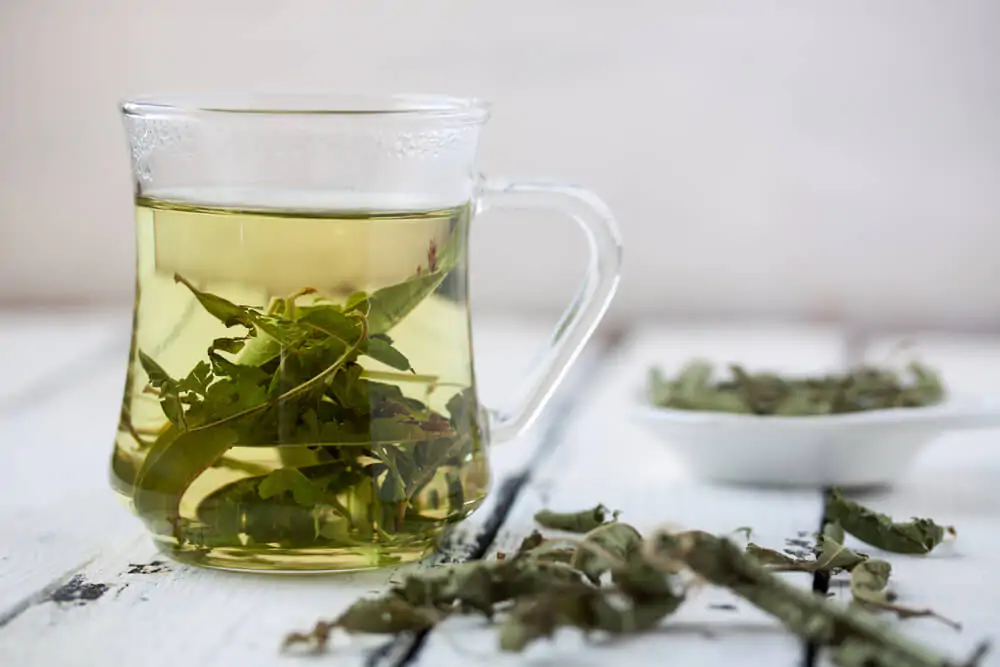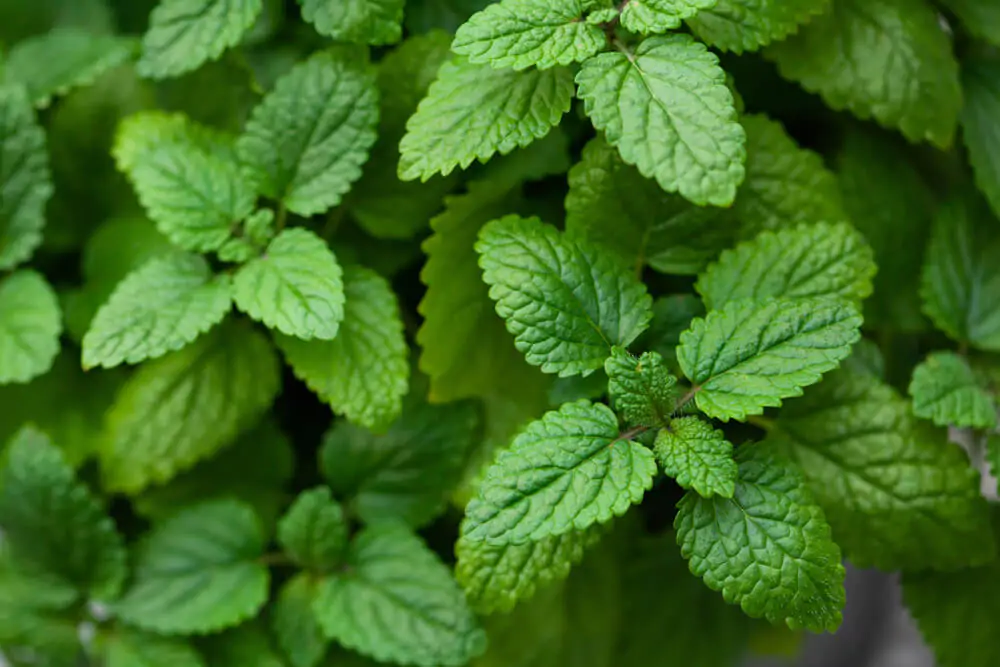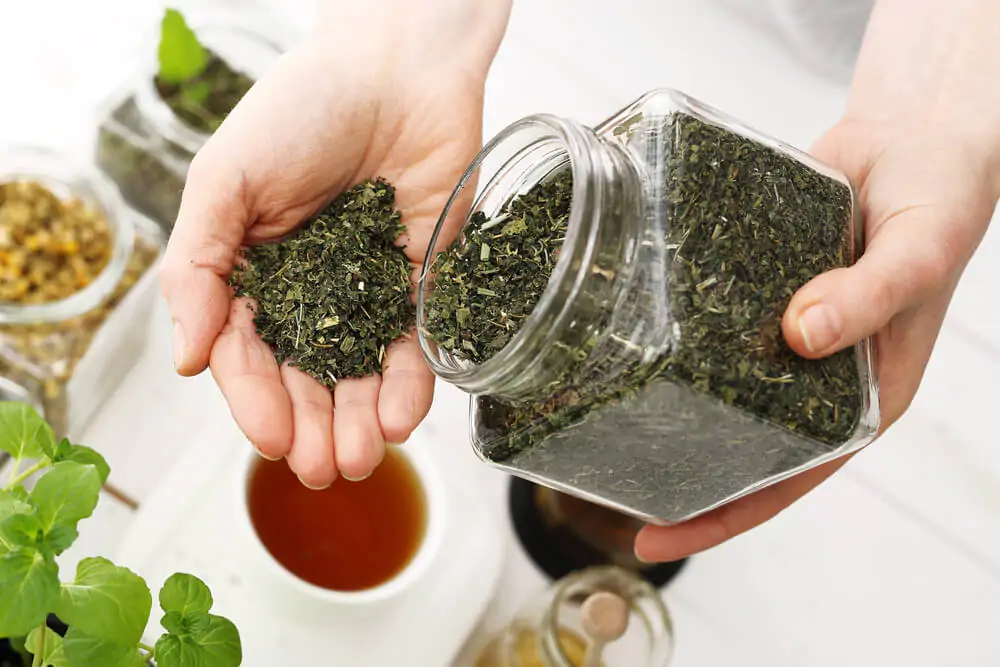What is Lemon balm tea? It is delicious, all-natural, and provides health benefits. Lemon balm tea is a non-caffeinated drink made by dropping leaves from the lemon balm plant into water and steeping like any herbal tea.

When it comes to tea, there is an A-Z several times over. The plethora of herbal and flavored teas available offer more than just a taste sensation. Many carry health benefits. Lemon Balm tea is one of them. Read about it here.
About Herbal Tea
Aside from water, tea is the world’s most-consumed drink. At its basic level, tea is water flavored with plant leaves. However, it needs to include parts of the Camellia sinensis plant for tea to be actual tea.
Herbal teas, or tisanes, are something else altogether. These teas include leaves, stems, flowers, bark, and spices in hot water to create a flavorful drink.
Because lemon balm is an herb and not a part of the tea plant, it is technically a tisane – but we still refer to tisanes as part of the tea family due to the way we prepare them.
You make tea by infusing, decocting, or mixing the ingredients into hot water. Depending on the use, it’s sometimes better not to let the water get to boiling level, as it could damage or burn some delicate leaves. For example, lemon balm tea tastes best when infused at about 180-205 degrees Fahrenheit.
Unlike black, green, or white tea, which has small amounts of caffeine (about half of what’s in coffee), herbal tea is non-caffeinated. This lack of caffeine makes it great for an evening beverage since you won’t lose sleep – and in fact, it may have calming effects.
You might also be interested in learning what tea is good with lemon.
About the Lemon Balm Plant

Lemon balm, known scientifically as Melissa officinalis, is an herb in the mint family. It is considered an invasive species in many regions due to its fast-growing abilities. Lemon balm emits an attractive fragrance that beckons pollinators like bees and butterflies to visit.
The lemon balm plant can grow to about 2 feet tall. Its heart-shaped leaves are fuzzy to the touch, growing in multiples along the stem. A bushy, somewhat showy plant, some gardeners use it as an ornamental, even if they don’t intend to harvest the leaves for tea or other purposes.
Culinary Uses
Beloved by humans and animals alike, lemon balm has a light and sweet flavor reminiscent of citrus. It makes a lovely addition to salads, soups, candies, and sauces.
Many chefs use lemon balm in liqueurs and fruit drinks. Lemon balm infuses effortlessly, and it doesn’t take much of the plant to make a significant flavor impact.
Medicinal Uses
Besides its alluring flavor as a tea, lemon balm also carries medicinal benefits. It works as a topical ingredient in homeopathic remedies for the skin, and many believe it helps balance mood and improves anxiety symptoms. Lemon balm also works well as a supplement or extract.
Other possible benefits include menstrual cramp relief and digestive system regulation. Lemon balm is a popular ingredient in lotions and other topical items.
Making Lemon Balm Tea

Like other tisanes, the best way to make tea from lemon balm is by dropping the leaves into hot water. Allow the tea to steep as long as possible (typically up to 15-20 minutes) for the most flavor infusion.
The lemon component is mild enough not to overpower other flavors but strong enough to stand alone. It can be re-steeped a time or two for maximum enjoyment of the leaves before discarding them in compost.
Lemon balm is standard in plant nurseries and home improvement stores for its versatility and straightforward growth – despite its many uses, the lemon balm herb does not require extravagant care to grow in most climates.
Once the leaves bloom, pluck a handful and mix them into hot water with no prior preparation. You can also dry the leaves and store them in a chilly place for later usage.
If you want to grow your lemon balm at home, the process is relatively simple. Get a well-draining pot and nestle the baby plant into the soil. Place in a warm location, such as a sunny window, water every few days, and watch the lemon balm grow in just a few weeks.
If you liked this article check out What is a Fennel Tea?

